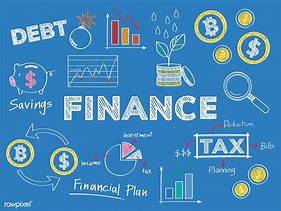How to Invest in Index Funds and ETFs: A Beginner’s Guide
Investing can seem daunting for beginners, but index funds and exchange-traded funds (ETFs) offer accessible options for building a diversified portfolio with minimal effort. Both investment vehicles have gained popularity due to their simplicity and cost-effectiveness. Here’s a step-by-step guide to help you understand and invest in index funds and ETFs.

1. Understanding Index Funds and ETFs
Before diving into the investment process, it’s crucial to understand what index funds and ETFs are:
Index Funds: These are mutual funds designed to track the performance of a specific market index, such as the S&P 500. By investing in an index fund, you’re essentially buying a small piece of each company within that index. This broad exposure allows for diversification and reduces the risk associated with individual stocks.
ETFs (Exchange-Traded Funds): Similar to index funds, ETFs also track a specific index. However, they trade on stock exchanges like individual stocks. This means you can buy and sell ETF shares throughout the trading day at market prices, offering greater flexibility compared to index funds, which are typically purchased at the end of the trading day at the fund's net asset value (NAV).
2. Benefits of Investing in Index Funds and ETFs
Investing in index funds and ETFs comes with several advantages:
3. Choosing the Right Index Fund or ETF
When selecting an index fund or ETF to invest in, consider the following factors:
Index Type: Consider which index you want to invest in. Options include broad market indices like the S&P 500, international indices, or sector-specific indices. Choose one that aligns with your investment goals.
4. Opening an Investment Account
To invest in index funds and ETFs, you’ll need to open an investment account. Here are some options:
Brokerage Account: Most investors open a brokerage account through online platforms, allowing you to buy and sell stocks, ETFs, and index funds. Compare platforms based on fees, user experience, and available investment options.
Robo-Advisors: If you prefer a hands-off approach, consider using a robo-advisor. These automated platforms create and manage a diversified portfolio for you based on your risk tolerance and goals, often using index funds and ETFs.
5. Making Your First Investment
Once your account is set up, follow these steps to make your first investment:
6. Monitor Your Investments
While index funds and ETFs require less frequent monitoring than individual stocks, it’s still important to keep an eye on your investments. Review your portfolio periodically to ensure it aligns with your financial goals and risk tolerance.
Rebalancing: Over time, some investments may grow faster than others, leading to an imbalance in your portfolio. Rebalancing involves selling some assets and buying others to maintain your desired asset allocation.
Staying Informed: Keep yourself updated on market trends, economic changes, and adjustments to your financial goals, as these factors can influence your investment strategy.
7. Be Patient and Stay Committed
Investing is a long-term game, and the power of index funds and ETFs lies in their ability to compound returns over time. Stay committed to your investment strategy, and resist the temptation to react impulsively to market fluctuations.
 blogpay
blogpay
























Total Comments: 0